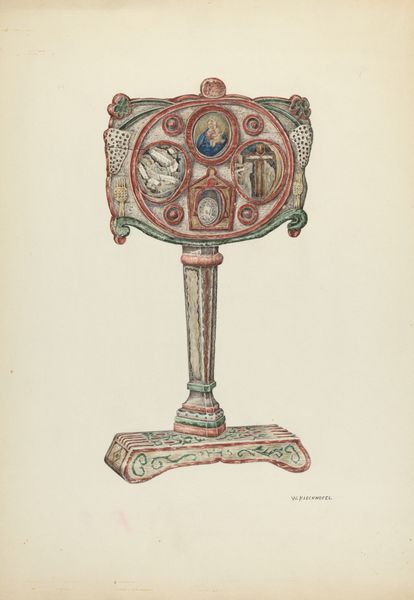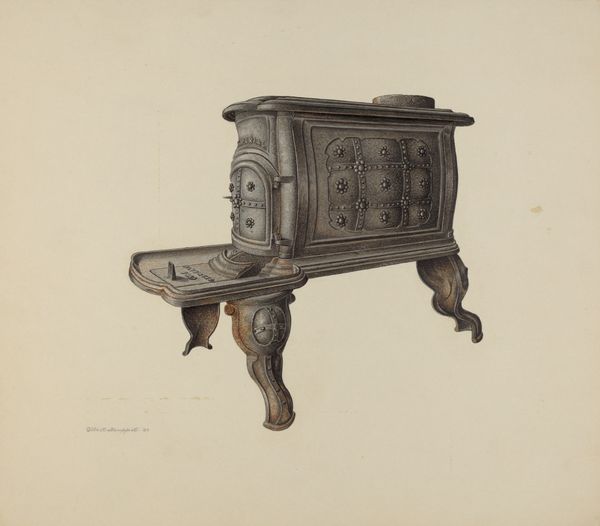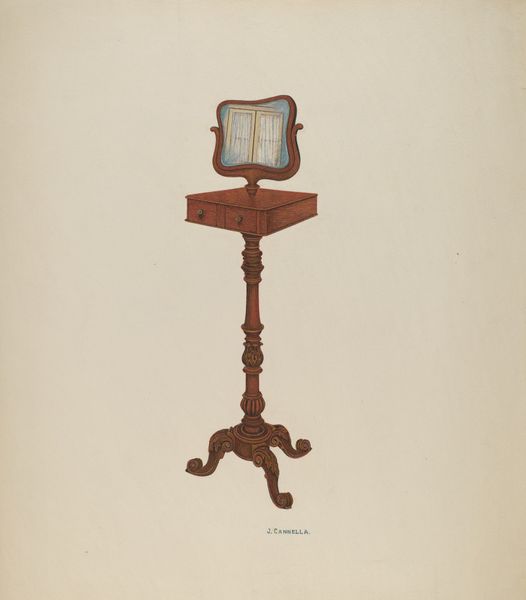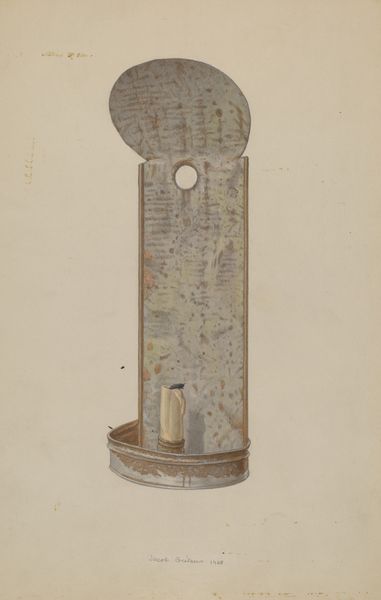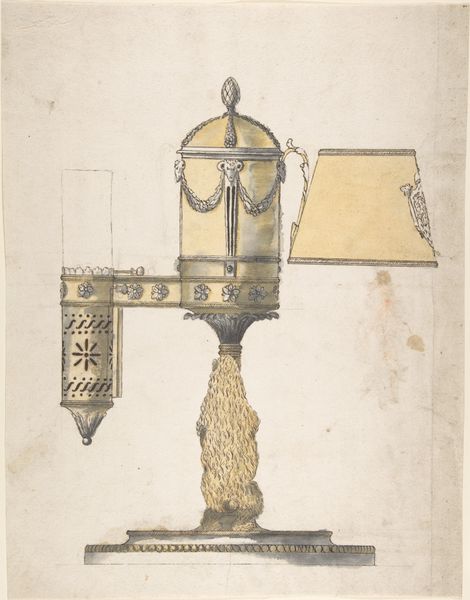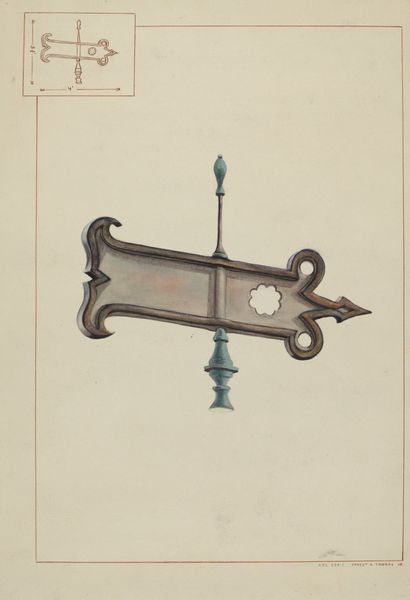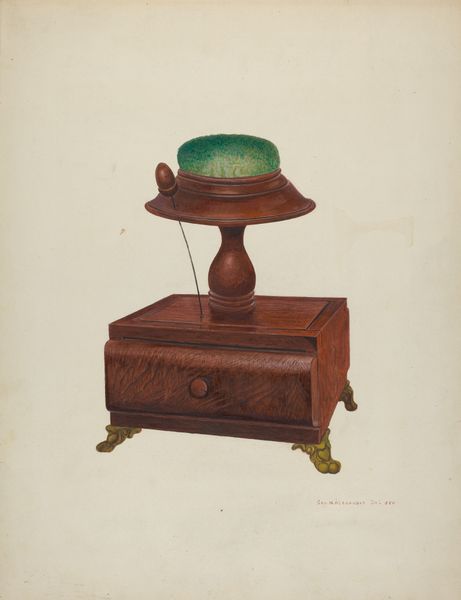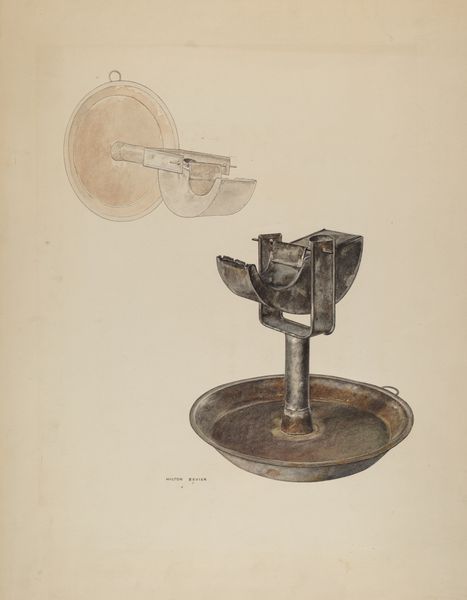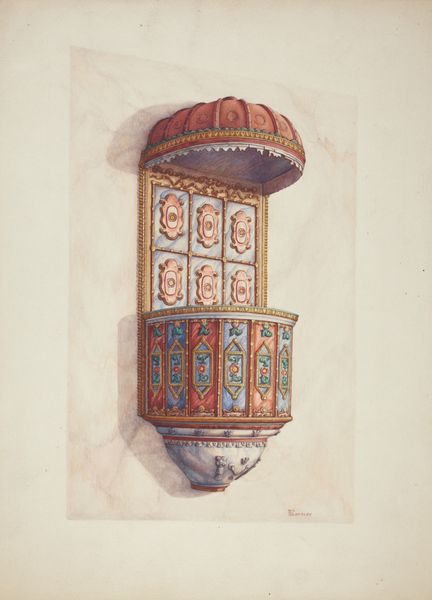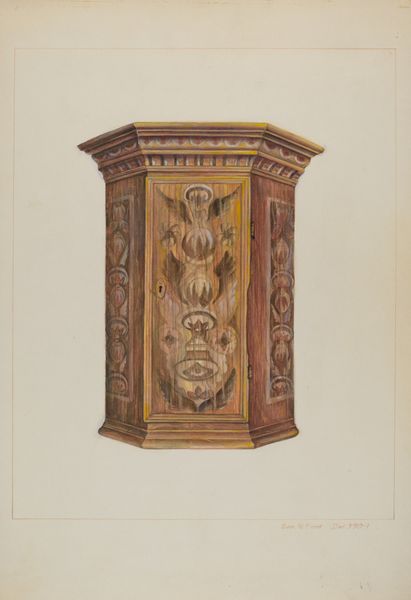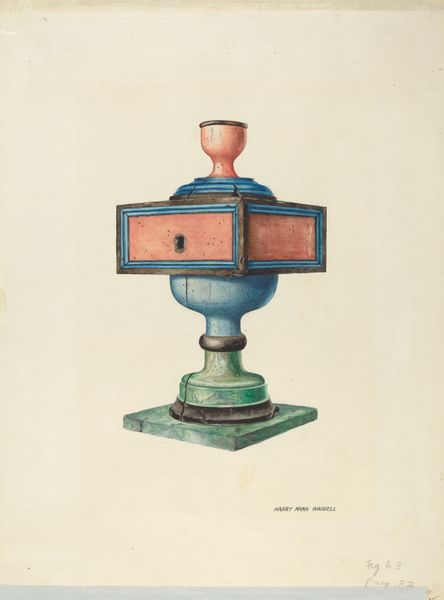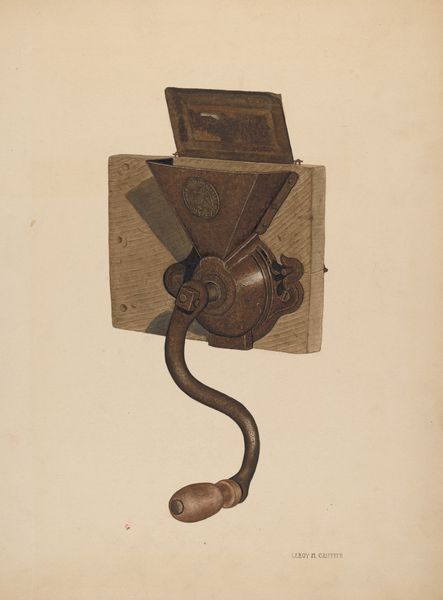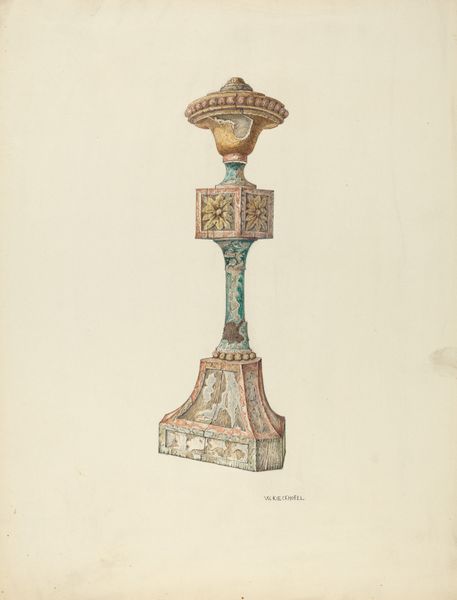
drawing, watercolor
#
drawing
#
charcoal drawing
#
watercolor
#
pencil drawing
#
watercolour illustration
#
watercolor
Dimensions: overall: 51.1 x 40.8 cm (20 1/8 x 16 1/16 in.) Original IAD Object: 25 3/4" wide; 19 3/4" high
Copyright: National Gallery of Art: CC0 1.0
Curator: This work, titled "Conductor Head," was created by Kurt Melzer in 1938. The materials appear to be watercolor and possibly some pencil or charcoal for details. My first thought is it feels almost architectural. Editor: It certainly does. It’s rather imposing, despite the modest materials. I'm immediately struck by its austere beauty, especially how the craftsmanship is celebrated with the star motif and the copper coloring. Curator: Exactly. Let's consider this piece from a material perspective. It's a study of a functional object elevated through artistic rendering. What purpose did this conductor head serve? Who produced these, and how was this aesthetic detail important during the 1930s? Was it mass-produced, or were such details specific to the patrons' economic status? Editor: That's fascinating. Its cultural moment really dictates the piece’s power, doesn't it? We have to see the Conductor Head within a social and political context, consider the relationship between art, craft, and industry. Think about the New Deal art programs during the Depression; how did initiatives shape artistic production and public works like this? How did the cultural institutions of the time regard pieces like these? Curator: It's about elevating utilitarian objects by hand using specialized craft traditions to suggest quality while implying access to wealth. The materials belie what the objects are: an architectural feature indicating quality work done by qualified artisans in service to economic inequality. Editor: And how these visual choices—the symmetry, the stylized stars—speak to larger design trends or perhaps even social ideologies present at the time. It's the politics of aesthetics embedded in functional architecture. Even a simple thing such as this says volumes. Curator: Right. Thinking about the means of production helps us unravel the subtle ways power dynamics were embedded within the built environment. This rendering memorializes the details by highlighting this small-scale feature within architectural practices. Editor: Absolutely. The piece reminds us to critically examine how culture shapes perception. This simple drawing can really act as an examination of consumption and class within a specific historical context. I'm more reflective now after considering its societal implications. Curator: Yes, a look at materiality informs my historical sense and helps frame the narrative around artistry, value, labor, and societal power.
Comments
No comments
Be the first to comment and join the conversation on the ultimate creative platform.
